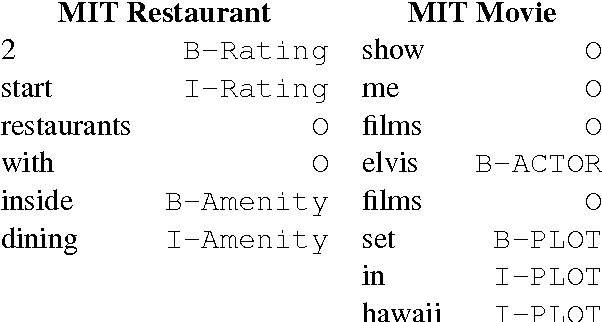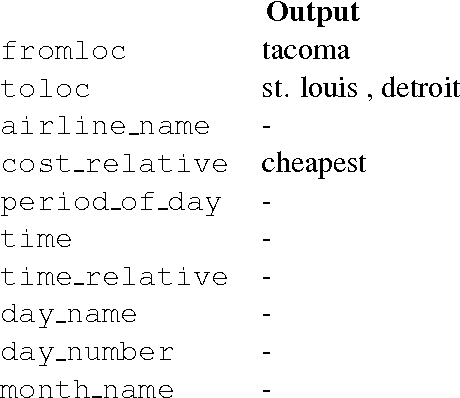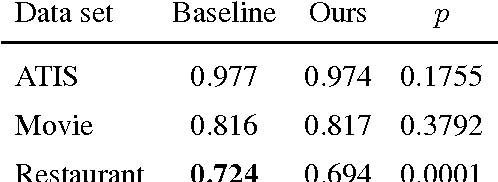End-to-End Information Extraction without Token-Level Supervision
Paper and Code
Jul 16, 2017



Most state-of-the-art information extraction approaches rely on token-level labels to find the areas of interest in text. Unfortunately, these labels are time-consuming and costly to create, and consequently, not available for many real-life IE tasks. To make matters worse, token-level labels are usually not the desired output, but just an intermediary step. End-to-end (E2E) models, which take raw text as input and produce the desired output directly, need not depend on token-level labels. We propose an E2E model based on pointer networks, which can be trained directly on pairs of raw input and output text. We evaluate our model on the ATIS data set, MIT restaurant corpus and the MIT movie corpus and compare to neural baselines that do use token-level labels. We achieve competitive results, within a few percentage points of the baselines, showing the feasibility of E2E information extraction without the need for token-level labels. This opens up new possibilities, as for many tasks currently addressed by human extractors, raw input and output data are available, but not token-level labels.
 Add to Chrome
Add to Chrome Add to Firefox
Add to Firefox Add to Edge
Add to Edge